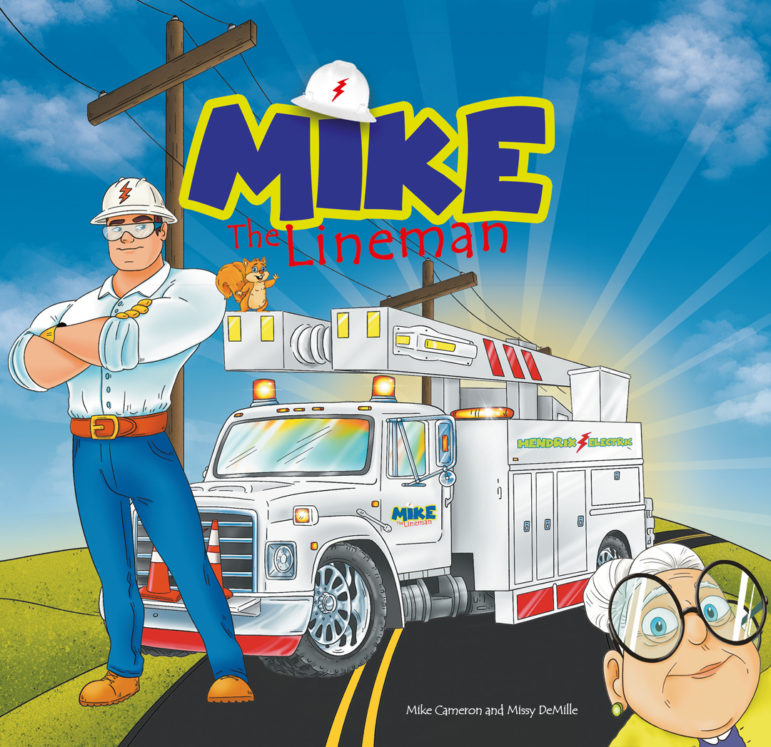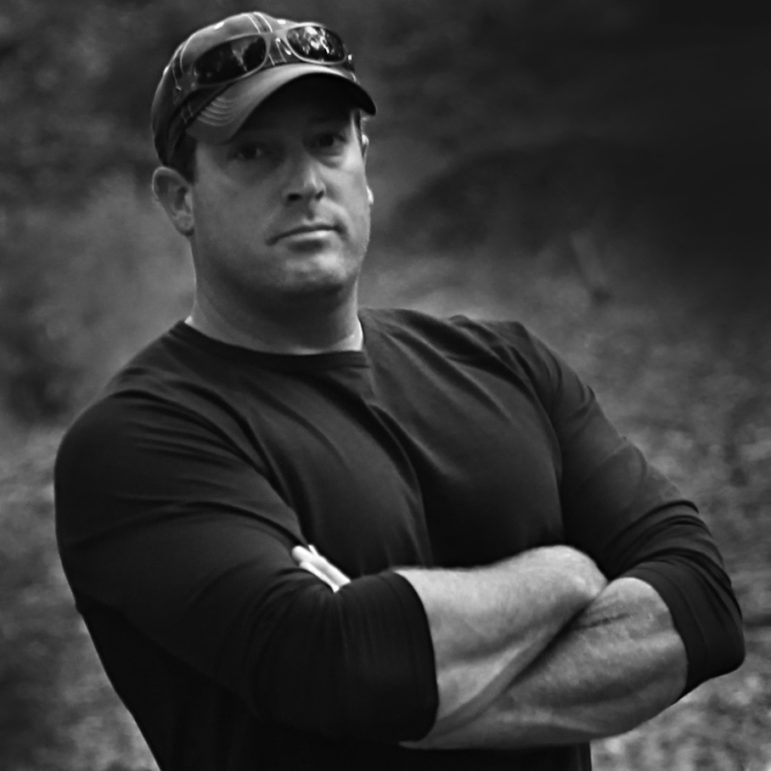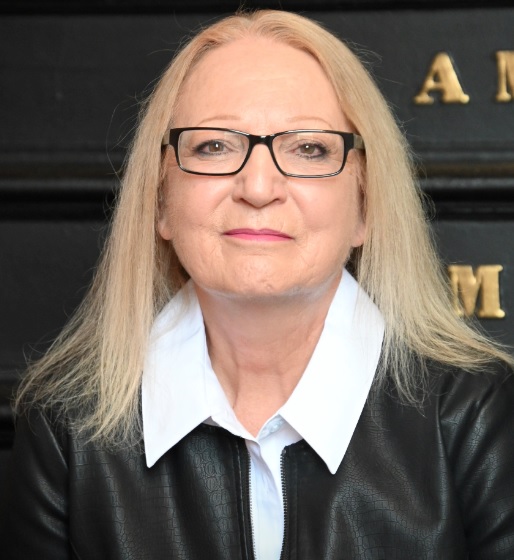

By BEVERLY STODDART, A NH Writers LIfe
Writing a book easily goes from passion to obsession. It is a difficult, lengthy process, and the weak-hearted should save themselves the pain of the endeavor. Missy DeMille and Mike Cameron of Londonderry, NH, are heroic soldiers in this war and have fought their way through the trials of getting an idea, turning the idea into a manuscript, self-publishing the manuscript into book form and have taken on the next challenge of promoting and working to get a commitment from one of the many Hollywood networks like Netflix, Hulu, Nickelodeon, and others.
Missy and Mike have invested in their idea to the tune of about $15,000. The payoff would result in a contract with a network, a series of books, a line of products, toys, candy, and more, as well as a speaking tour and support of a non-profit foundation for electrical linemen who seem to be the forgotten group of first responders. According to LinemenCentral.com, “42 for every 100,000 lineman are killed on the job each year,” and “around 2,400 for every 100,000 lineman suffer serious non-fatal injuries each year. The most common of these serious injuries are electrical burns and broken bones from falls.”*
And just like Jimmy Webb’s song, “Wichita Lineman,” brought to life beautifully by Glen Campbell, both Missy DeMille and Mike Cameron want you to need and want you to read and love Mike the Lineman.
Why did you write a children’s book? Whose idea was it?
MIKE: Missy had the idea years ago. When she met me, she found out what I did for work, and she never knew what we really did. Like most people, they see us causing traffic. So, she found out from me what we do, and she was inspired.
MISSY: I was inspired by the fact he wasn’t just a guy standing on the side of the road and the bucket was blocking traffic. When I first met him, I was enamored with him, and I said, oh, you light the world.
You said that?
MISSY: Yes, a couple of glasses of wine in. However, what I didn’t realize when I met him but consequently found out, these guys go out into every storm. And this is nationwide. They go from the Nor’easters up here to the tornadoes and hurricanes down south, and it’s extraordinarily dangerous. I considered what I saw him go through for a true first responder. You see all the books about firemen and policemen. There was nothing in the market about linemen. As we went forward in the relationship, I got to know more about what he would do. He would go into these Nor’easters for eighteen hours and sleep for six for a week on end. I started to wonder what these guys do when the entire county in Westchester, Texas, comes down from hurricanes.
MIKE: Little by little.
MISSY: The police and firefighters can’t do their job unless the power is on. I really felt there was a call to that. As he talked more about his job, I found out there are people who die who get electrocuted. There are people who have lost their arms, their limbs.
MIKE: It’s in the top ten of the most dangerous jobs in the world. You’re up there working with 13,000 volts. You’re up there in the wind that’s blowing everything around in Nor’easters, where you barely can see in front of you. You can’t hear because the wind is so hard. The buckets are flying back and forth. It can be dangerous in those conditions.
You’re terrifying me right now.
MISSY: You hear when police and firefighters are killed. You don’t hear when a lineman is killed. They’re usually the breadwinners. This is a huge brotherhood. What was happening was when I was seeing more and more, and there wasn’t support for this industry.
MIKE: So, the best way to answer why a children’s book we wanted to introduce or shed light on this profession.
MISSY: It’s an opportunity for him to teach safety, too.
The elephant in the room here, though, is how you didn’t know anything about the Glen Campbell song “Wichita Lineman.”
MIKE: I’ve known about it.
MISSY: I didn’t. Think about this. Our demographic we are pitching is the parents of three to seven years old, which is so not in their wheelhouse for music. Our demographic is rarely hearing that song because it is an older song. It was in the 1960s.
How did you find your illustrator?
MIKE: I was very particular about what I wanted it to look like. I had a real feel for what I wanted to do. I literally searched on Google for illustrators, and I looked for images for a long time for style and, brightness, color. I found one. Unfortunately, just because of time differences, we found one in South Africa. We found Solomiia through GetYourBookIllustrations. They all happen to be in South Africa. There was quite a bit of delay with the time difference. We found the style. She matched what we sent them. I was very particular on every page. I compiled and designed Mike, the squirrel, Mrs. Bucksqueeze, and the truck. I spoon-fed them every page.
You were deeply involved with the process.
MISSY: Deeply involved is an understatement.
MIKE: I’m very OCD. Yes, I wanted it to look a certain way.
That could be a result of your job.
MISSY: He’s very much the creative, brilliant mind. Mine is more the marketing and the business. I come up with the ideas, and he executes them.
Would you speak about your foundation?
MISSY: We just set up the MTL Foundation, and we’ll take ten percent of the proceeds of all the sales of the books. We have a place on our website where the linemen can submit their stories and look for help.
MIKE: Any families that have had linemen that got hurt on the job, whether it’s severe or death, and they need financial and medical help, scholarships for kids. We’re going to set up all of that to donate to that. There’s a link on our website to just donate. (https://www.mikethelineman.com/)
How did the story come about or evolve?
MIKE: The conversations went back and forth. Missy would quiz me, and I filled her in on the day-to-day stuff. A reason electricity goes out is squirrels. They pop the transformers. A neighbor will call and say I heard a big boom. You look at the bottom of the pole, and there’s this dead squirrel. We went back and forth. I know what I do every day. We talked about the squirrel part, and that was a good lead-in. Why don’t we make the squirrel his buddy, and he gets into mischief? In the end, he gets zapped but is saved. The message to the kids is safety. Don’t touch it if you don’t know what it is.
Did the artist model you for the main character?
MIKE: Missy wanted it that way.
MISSY: It’s genuine. It is him and how I see him. I have pictures that look like him.
MIKE: As far as the clothing, the colors, the hat, the sunglasses. The clothing is a little different. You can’t wear short sleeves. But they’re rolled up [in the book].
MISSY: He has an outfit he’s going to wear for readings.
The age range is three to seven. Who determined the age range?
MIKE: The publisher is Archway Publishing, and they have categories.
I love the illustration of Mrs. Bucksqueeze. How did you come up with the name?
MIKE: I used a lot of terminologies that we have in the profession that most people wouldn’t catch. Bucksqueeze are the belts we wear when we climb the poles.
MISSY: He came up with Hendrix Electric and the Swiggly Giggly Lollipops. We figured for the linemen reading to their kids, they’d pick up on these things to have as part of their conversation.
MIKE: Some of the wires that are used are called Hendrix wires, and so we have Hendrix Electric. Apprentice Way was from your start as an apprentice [in the field]. Like the name Mr. Ermco is from some of the stuff we have. Any lineman will catch those.
Are there going to be more books?
MIKE: We have seven other books we are compiling and have manuscripts started for. We’ll keep introducing more and more terminology and different characters.
What is it like being a lineman?
MIKE: I adapt to anything. Yes, it’s dangerous, but it’s like any other job. The guys we work with are awesome. Everybody looks after each other. The job is interesting. You’re up forty to fifty feet in the air doing your job. It’s fun sometimes, sometimes not, certainly, with the storms. Every day is different. Different locations, different jobs. It’s grueling. We wear rubber gloves, rubber sleeves, and long-sleeve shirts. When it’s ninety to a hundred degrees, you’re sweating.
MISSY: He’s also up there when it’s ten degrees in the winter. He has said his fingers are frozen and they adapt. I want him to quit.
Describe your safety protocols.
MIKE: We have a job brief before every job. There is a form the crew leader fills out. We all get together, and this is the job we’re doing today. There are hazards there or loose rocks on the ground. It’s raining out. There are cars underneath. We point out all the safety issues. As far as physical safety, we have all our PPE and personal protective equipment. Our hard hats, our glasses, we have to have rubber gloves and rubber sleeves. If we’re working in the bucket, we have our harness that is strapped into the bucket. The buckets are also electrically protected. We’re very well protected. Plenty of people have gotten a little zap across the neck. It can happen.
I thought squirrels didn’t get electrocuted. I see them running on the lines all the time, but you’re telling me they do.
MIKE: They absolutely do. That’s the bird on the wire. Anybody could go up there and hang from a single phase as long as your feet don’t touch anything else. The squirrels, when they cross to another phase that’s when they get zapped.
But you have these rubber gloves that you can touch anything. Just rubber?
MIKE: Just thick rubber. They’re rated for 17,000 volts, but we work with 13,000 volts. The gloves and sleeves protect you.
When did you start this book?
MISSY: We started this book three years ago. We followed what the rules were for writing a children’s book, and that was having a plot, a problem you solve, engaging, and having a character the people can get into and really love.
MIKE: This book tells the story of how Sparky [the squirrel] becomes Mike’s buddy.
Would you take me from the beginning to the end on how you went from idea to finding a publisher and going to New York?
MISSY: I’m very much a believer of do-it-yourself. Don’t wait. Just keep going.
MIKE: We started by doing the research. We looked at a lot of books and flipped them over, and looked at the publishers.
MISSY: Most of the publishers have subsidiaries, and Archway Publishing is a subsidiary of Simon and Schuster, which published Curious George.
MIKE: We wanted a big name to do the same thing. You can’t get to Simon and Schuster until you go through Archway Publishing. We are self-published.
MISSY: We are not guaranteed anything by Simon and Schuster. We own the rights. It was a quick journey from finishing the book, to publishing the book, to getting to New York City. It was probably a six-month span.
You approached Archway. Are you comfortable talking about the money you spent? How much was the illustrator?
MIKE: The illustrator was $3,000.
Did you have a budget in mind when you started?
MIKE: No.
What level package did you buy from Archway?
MISSY: We bought the second highest one; the most important thing in that package for us was the Google ads. Those are worldwide ads.
MIKE: They are for ninety days.
MISSY: The process of publishing this was arduous with Archway. They had a concierge for everything. It was horribly difficult to talk to someone that had the whole project in front of them.
MIKE: You can never talk to the person who knows what they’re doing. You have to talk to someone who has no clue.
Would you go with them again?
MISSY: I would because now we know the process. You have to be assertive in this process or it will take a long time. We started this actual self-publishing in November of last year, it was on the shelves by April. That was through tremendous hammering. It’s the process. I don’t know if we’ll self-publish the next one. We haven’t got that far. In the span of putting it on the shelves on April 3rd, it’s now May 1st, and we’ve already been in New York City pitching this thing for four days in one week.
MIKE: We’ve already spent $3000 on the illustrator and at least $9000 to publish it.
MISSY: To go out and pitch it to New York City, that was another $3000.
It’s published. You get five copies. How do you get it distributed?
MISSY: It’s out there with an ISBN number so anyone who sells books can pick it up.
MIKE: Automatically, you go on Amazon, you go on Walmart.com and Barnes and Nobel .com, among others, through the ISBN.
MISSY: The one thing I didn’t know going into this is it’s a completely new business. I already have two businesses, and this is a full-time job. The book is selling. It’s all happening in a span of thirty days.
Talk about the PITCHFEST that took place in New York.
MISSY: You pitch to seven different network producers from Hollywood, like Netflix, Hulu, Peacock, and Nickelodeon. I said maybe that’s our best shot.
So, you paid another $3000 for the PITCHFEST?
MIKE: The first [meeting] we went to was because we got it published through Archway. That was an invitation only to the Simon and Schuster event. That wasn’t the PITCHFEST.
MISSY: Simon and Schuster was on Tuesday. The PITCHFEST we paid for was Saturday. Hotel rooms are $500-$700 a night in New York City. We ended up driving back and forth in one week. We got there Tuesday, and we did the greeting, and then we had the whole conference for Simon and Schuster on Wednesday all day. You meet other authors. It was an extremely informative conference on what’s coming next and how Simon and Schuster handle it. We drove home. Worked Thursday and got back in the car and drove back Friday, and headed out to the PITCHFEST. That was the bigger deal with the networks. The details of the pitchfest were seven pages long. We had no idea what we were getting ourselves into.
MIKE: It was an intense day of coaching, and you pitch to other professionals first because the actual producers want to hear it in a specific way. You train with these other professionals first.
MISSY: It was literally speed-dating. Mike was only able to attend Friday night with me at the meet-and-greet. If he were in the room, it would have been another $3000. It was me. I went into a room after being coached all day long. I went in at 4 o’clock in the afternoon, and there were seven tables in a circle, and each one had a Hollywood executive. They don’t tell you who it is. They give you an idea of who may be in there. And the reason they don’t tell you is because they’ve had intense people, actors, authors in there, calling every day to these executives. This is the 22nd year they’ve done it.
I had my pitch written out and had two minutes to a bell. You sit and talk to the first executive. You pitch for two minutes, and the bell rings. You get up and move. Speed-dating with Hollywood executives. I timed my pitch to a minute-forty-five. Earlier that day, when you’re in a room of groups of twenty, I had to listen to their pitches. We got a little bit of critiquing from one of the other book executives. They went over every pitch. Some people were a complete mess, three or four minutes, some were at thirty seconds. Some didn’t even tell the story of their book. Some got up and read pages from their book. I felt so bad. How do you take 400 pages of a book you’ve worked on for ten years and put it in five paragraphs? The elevator speech is what they called it. I work extraordinarily well under pressure. So, I came up with mine the morning of. I came up with the full-feature film [pitch] of Mike the Lineman on the day before.
They asked me questions like do you see this as a cartoon network show. With episodes? Do you see this as a live-action with humans? Do you see this as a full feature? It was probably one of the most intense days of my life, and I’ve been on stage speaking to one-hundred-fifty people before. The pressure in that room to get your pitch out to these executives was insane.
How long do you have to wait before you hear something? Have you heard anything yet?
MISSY: We’ll get the feedback in three weeks. There was a list of networks, Google TV, Apple TV, and every streaming network. The seven executives will feed it to the different networks and cable networks. One of the interesting things is that these are 24-hour networks. They are in more need of content now than ever before. It can take two to three years to produce anything. They said it’s like a tumbleweed. If they like the idea, they get a writer involved, then they get an actor involved. Then they might get a financier interested. It could take a year, and it will take them two months to get back to us. In the meantime, we are going to work on the other seven [planned] manuscripts as well as finish what I just pitched and keep going on the business end of it.
MIKE: Two days ago, I checked my email, and I saw the results of the feedback. One of the seven was looking with interest and called for a copy of the book from Archway. That means they have some interest in pursuing the idea. We don’t know who it was who wanted the book.
MISSY: If they are interested, they will call Archway and then request our personal contact information. Archway will then call us and let us know if we want to share our information. Who wouldn’t?
ADDENDUM:
Missy shared the pitch she wrote and was required to give to the Hollywood executives during her two-minute PITCHFEST.
“In the colorful but sleepy little town of Brightsville, there lives an unsung hero whose heart is only rivaled by his stature. A true first responder, Mike, the lineman, teaches safety and to always do the right thing. Mike lights the world and saves the day every time! Mike is joined by his mischievous, fluffy little sidekick Sparky the squirrel and Mrs. Bucksqueeze, a quirky, old, comical candymaker with MacGyver-like skills.
Mike’s nemesis Cooper who works alongside him at Hendrix Electric, is an egotistical, petulant coworker who never helps out his crew, often putting them in danger. More importantly, Cooper is always vying for the attention of Zoe, a young schoolteacher in Brightsville who Mike has always loved from afar.
Suddenly a hurricane hits the small town, and the linemen at Hendrix Electric are called directly into the terrible storm to restore power.
The first emergency call comes in, and it is Zoe, the schoolteacher! Wires have fallen on her home, trapping her, threatening to start a fire!
Cooper gets the call and races ahead of his crew to try and rescue her himself. Cooper ultimately puts himself in danger when his bucket truck topples over in a fierce wind, leaving him hanging on a wire.
When Mike arrives, he has minutes to decide whether to rescue his arch-enemy or the girl he loves.
With minutes to spare and with the crafty help of Sparky and Mrs. Bucksqueeze, Mike rescues them both and saves the day!”
*https://www.linemancentral.com/lineman-positions/how-dangerous-are-power-lineman-jobs

Beverly Stoddart is a writer, author, and speaker. After 42 years of working at newspapers, she retired to write books and a blog. She is on the Board of Trustees of the New Hampshire Writers’ Project and is a member of the Winning Speakers Toastmasters group in Windham and the Ohio Writers’ Association. Her latest book is Stories from the Rolodex, mini-memoirs of journalists from the 1960s, 1970s, and 1980s. A prized accomplishment was winning Carl Kassel’s voice for her voice mail when she won the National Public Radio game, Wait Wait…Don’t Tell Me! She has been married for 45 years to her husband, Michael, and has one son and two rescue dogs.






